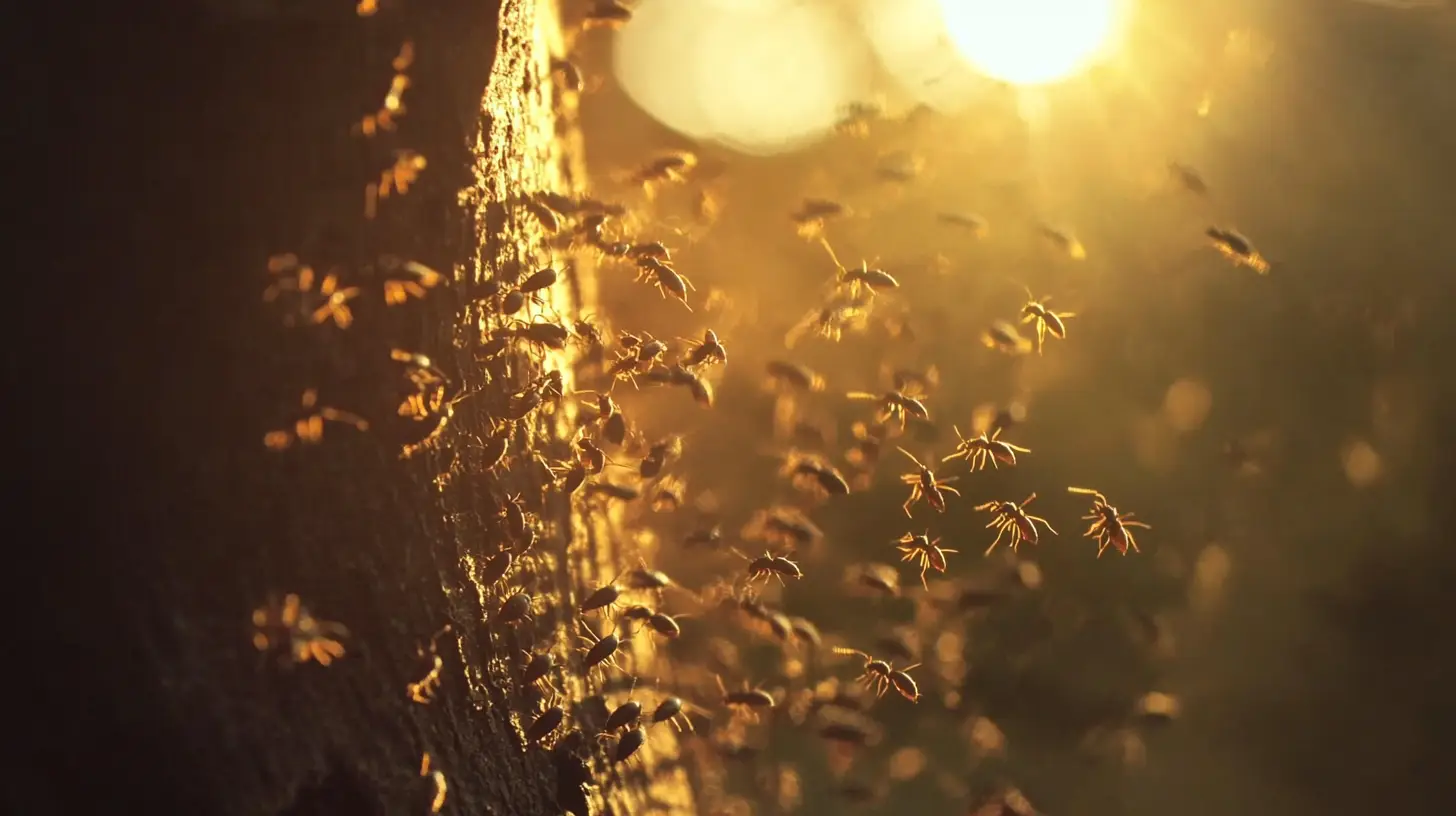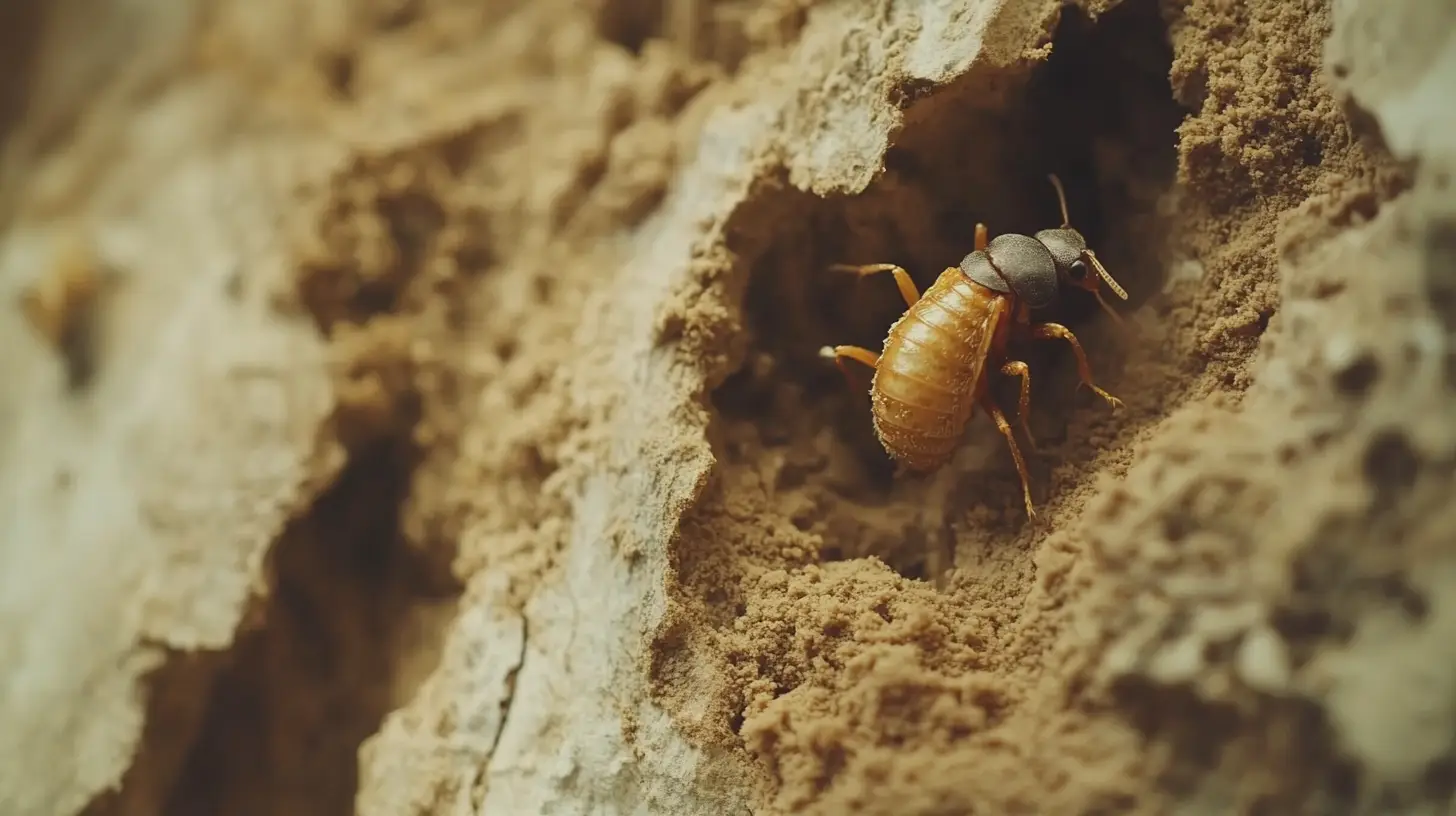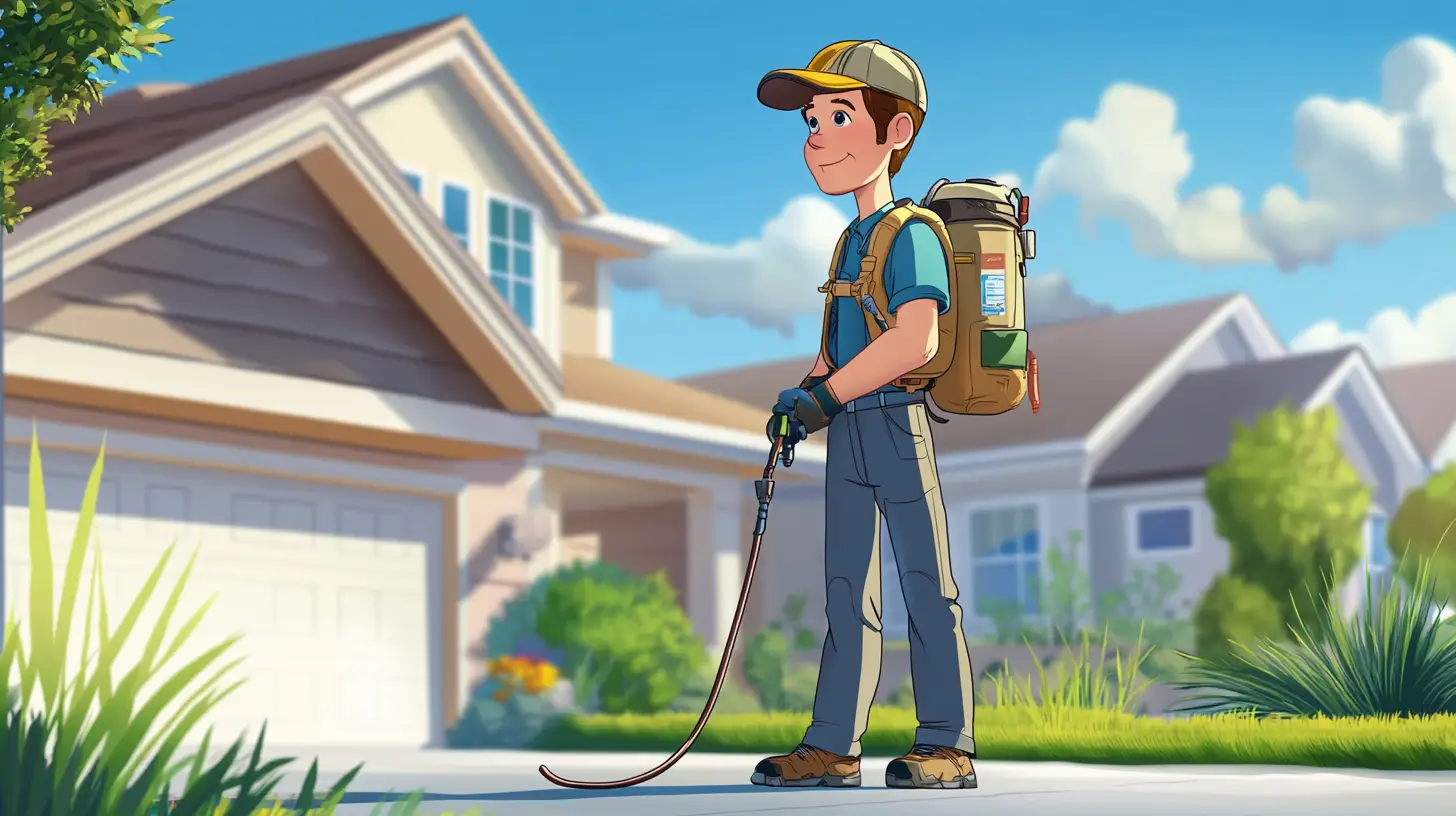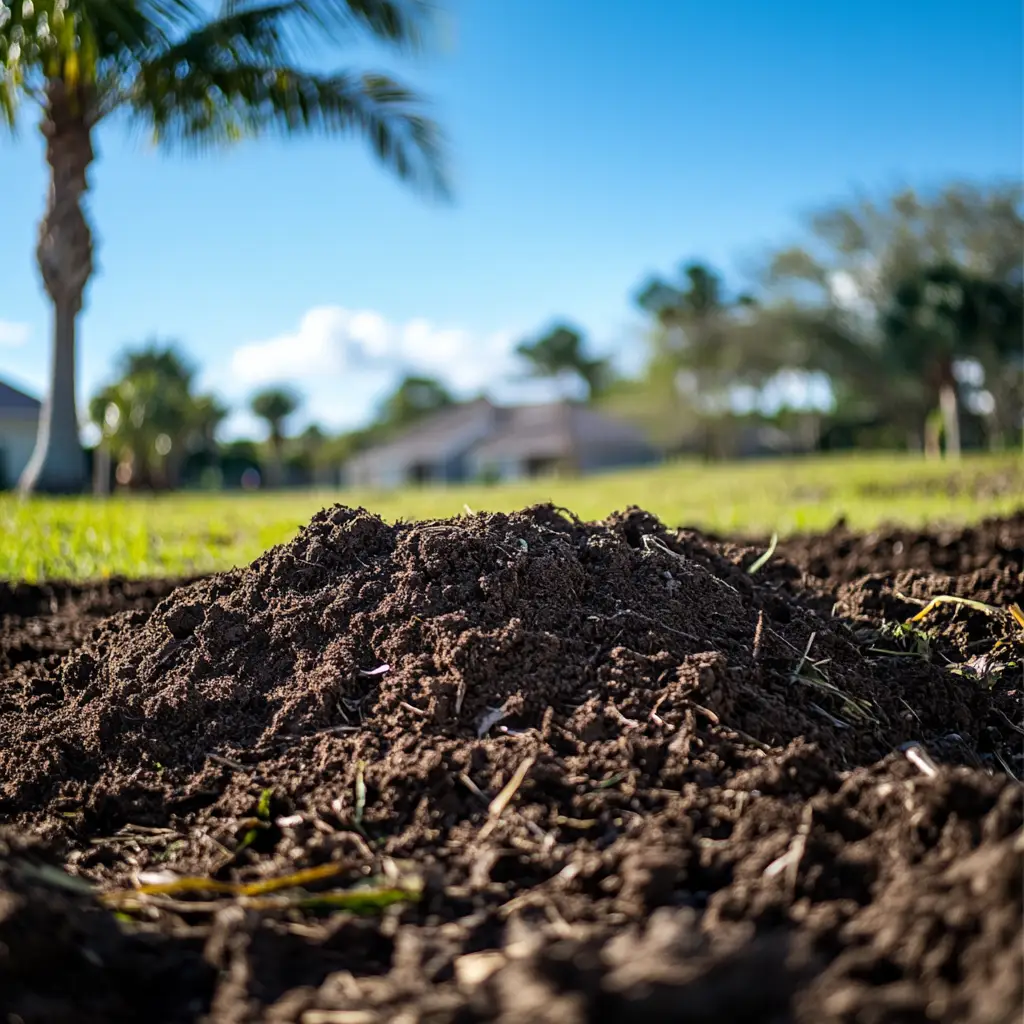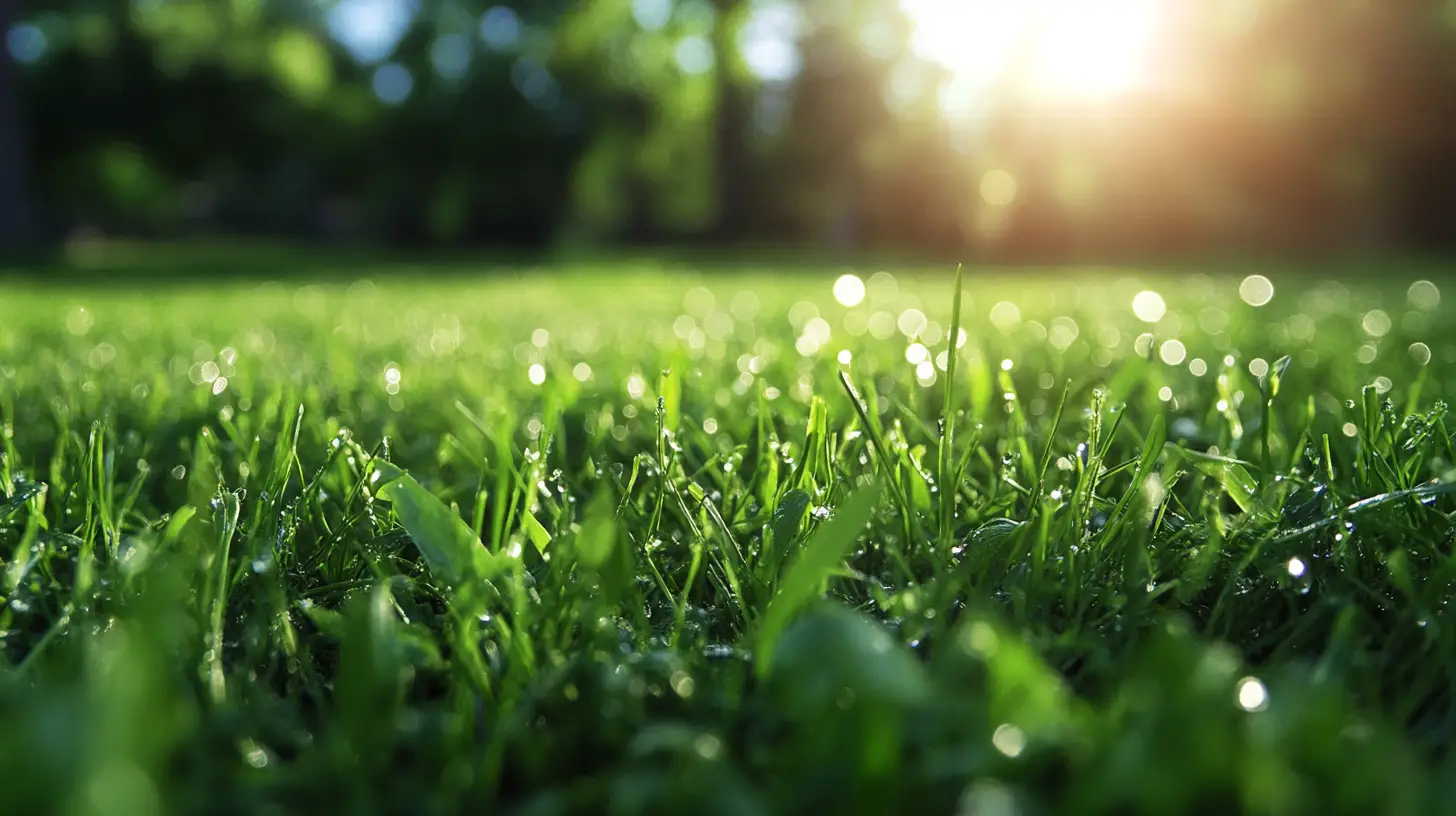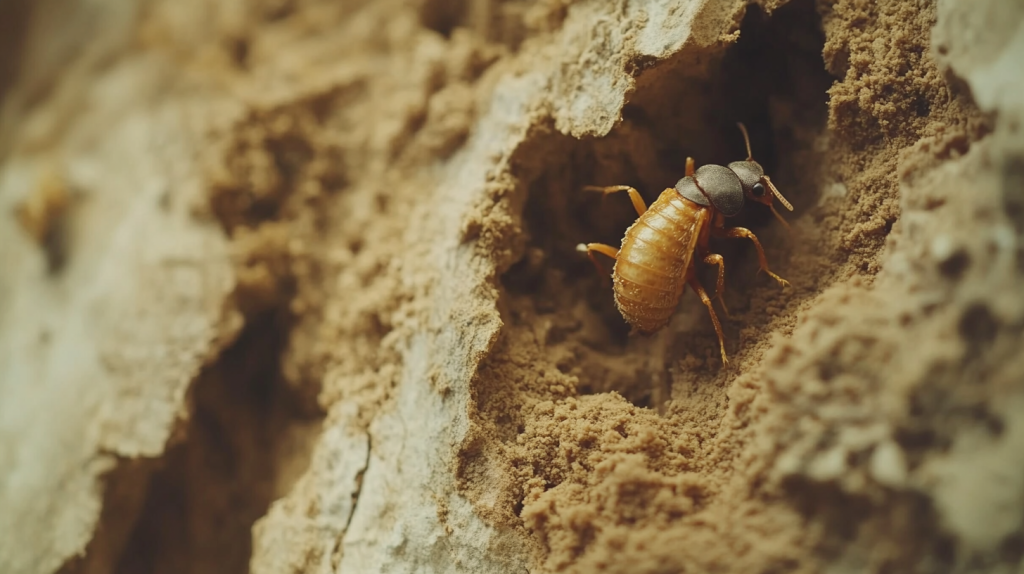
Table of Contents
Termite damage costs Florida homeowners over $500 million annually, making it one of the most financially devastating pest issues facing property owners today. With Florida’s warm, humid climate creating ideal conditions for termite activity, homeowners face significant repair expenses that standard insurance policies specifically exclude from coverage.
Key Takeaways
- Financial Vulnerability: Termite damage costs Florida homeowners over $500 million annually, with average repair expenses ranging from $8,000-$12,000 per incident—costs specifically excluded from standard homeowner’s insurance.
- Rapid Progression: Florida’s climate allows termites to remain active year-round and consume wood up to seven times faster than in cooler regions, accelerating damage timelines significantly.
- Structural Threats: Unlike cosmetic issues, termite damage progressively compromises structural integrity by hollowing support beams, floor joists, and load-bearing elements from within.
- Hidden Destruction: Termites typically consume wood from the inside out, meaning significant structural damage often occurs before visible signs appear on surfaces.
- Multiple Entry Points: Even well-maintained homes remain vulnerable through microscopic foundation cracks, construction gaps, utility penetrations, and wood-to-soil contact points.
- Species-Specific Risks: Florida’s unique termite diversity (20 established species) includes particularly destructive invasive varieties like Formosan termites that can cause significant damage within months rather than years.
- Prevention Value: Professional inspection and preventative treatment costs represent a fraction of potential repair expenses, providing substantial financial protection for your investment.
The financial impact of termite destruction
Florida’s position as a termite hotspot creates severe financial consequences for homeowners. Studies reveal the average termite damage repair in Florida costs between $8,000-$12,000 per incident, with severe cases exceeding $20,000. Southwest Florida properties face particularly high risk, with local climate conditions allowing termites to remain active year-round and consume wood up to seven times faster than in cooler regions.
Research from the University of Florida indicates termite-related losses continue escalating, with experts projecting that half of all South Florida structures will face termite risk by 2040. This growing threat stems from expanding termite ranges and the introduction of aggressive invasive species that now overlap with native populations.
Florida’s destructive termite species
Florida hosts an unusually diverse termite population with 20 established species, including six invasive varieties that cause exceptionally severe damage:
- Native subterranean termites: Present statewide, these termites establish soil-based colonies that steadily consume wooden structural elements from below.
- Formosan subterranean termites: Once limited to coastal areas, these invasive “super termites” now infest most major Florida cities. Their colonies contain millions of workers that can consume one foot of 2×4 lumber in just 25 days.
- Asian subterranean termites: Originally confined to Miami, these aggressive termites have expanded northward, with colonies capable of causing significant structural failure within 2-3 years.
- West Indian drywood termites: Unlike subterranean species, these termites live entirely within wooden structures and spread when infested materials are transported between properties.
Warning signs of termite damage
Early detection significantly reduces repair costs and structural compromise:
- Visible mud tubes: Pencil-width tunnels appearing on foundations, walls, and other surfaces indicate active subterranean termite movement.
- Hollow-sounding wood: Termites consume wood from the inside out, leaving a thin veneer of surface material that sounds hollow when tapped.
- Tight-fitting doors and windows: Moisture released during termite feeding often warps wooden frames, causing doors and windows to stick.
- Buckling paint or wallpaper: Termite activity behind walls creates moisture that causes surface materials to bubble or buckle.
- Frass accumulations: Small piles of pellet-shaped droppings indicate drywood termite colonies working within wooden structures.
Financial protection strategies
With standard homeowner’s insurance explicitly excluding termite damage, proactive protection becomes essential:
- Professional inspection: Annual professional evaluations can identify early termite activity before major damage occurs, potentially saving thousands in repair costs.
- Comprehensive treatment: Professional termiticide application creates chemical barriers that prevent termite entry, with protection lasting 5-7 years depending on soil conditions.
- Moisture control: Proper drainage, ventilation, and plumbing maintenance eliminate conditions that attract termites and accelerate damage progression.
- Construction methods: Implementing termite-resistant building techniques during construction or renovation significantly reduces future damage risk.
- Property maintenance: Removing wood debris, keeping mulch away from foundations, and maintaining proper clearance between soil and wooden elements reduces termite attraction.
Why professional termite protection matters
Given Florida’s extreme termite pressure, professional intervention provides significant advantages over DIY approaches:
- Expert identification: Different termite species require specific treatment protocols for effective elimination.
- Professional-grade products: Commercial termiticides and application equipment provide significantly longer protection than retail products.
- Comprehensive coverage: Professional treatments address all potential entry points, including those hidden within construction details.
- Ongoing monitoring: Regular professional inspections identify new termite activity before extensive damage occurs.
- Warranty protection: Professional services often include damage warranties that provide financial protection unavailable through standard insurance.
Protecting your home from termite damage
Our specialized termite protection services include thorough property inspection, customized treatment plans, and ongoing monitoring to prevent costly damage to your Lakewood Ranch home. Our certified technicians understand Florida’s unique termite challenges and provide comprehensive solutions tailored to your specific property conditions.
Frequently Asked Questions (FAQs)
Can you tell if your house has termites?
Yes, several visible signs can indicate termite presence in your Lakewood Ranch home. Look for mud tubes (pencil-width tunnels) on foundation walls, baseboards, or other surfaces—these are termite highways that protect them while they travel. Watch for discarded wings near windowsills and doorframes after spring swarms, which indicate new colonies forming nearby. Hollow-sounding wood, bubbling paint, sagging floors, or doors that suddenly stick can all signal hidden termite activity. Frass (termite droppings resembling tiny wood-colored pellets) around wooden elements often indicates drywood termite infestation. While some signs are subtle, professional inspections using specialized equipment can detect termite activity before visible damage appears.
What does the beginning of termite damage look like?
Early termite damage often appears as subtle changes to wooden surfaces and structures. Initial signs include small pinhole openings in wood (particularly near the ground level), tiny tunnels visible in exposed lumber, and slight buckling or bubbling of paint and wallpaper where moisture from termite activity affects wall surfaces. Wood may develop a honeycomb appearance when damaged pieces are broken open, revealing tunnels running along the grain. Early-stage damage might also include minimal sagging in floors or small sections of drywall that sound hollow when tapped. Termites typically consume wood from the inside out, meaning significant damage can occur before surface symptoms become obvious—making early professional detection crucial for Lakewood Ranch homes.
Can you live in a house with termite damage?
Whether you can safely live in a home with termite damage depends entirely on the damage extent and location. Minor cosmetic damage to non-structural elements poses little safety risk and doesn’t require immediate evacuation. However, significant damage to load-bearing components like support beams, floor joists, or roof trusses can compromise structural integrity and create genuine safety hazards. Professional assessment is essential to determine if damage has reached critical levels. A certified inspector can determine if the home remains structurally sound while repairs proceed. Many Lakewood Ranch homeowners live in their homes during termite remediation for contained damage, but extensive structural compromise may require temporary relocation during major repairs.
How long before termites destroy a house?
The timeline for significant termite damage varies dramatically based on colony size, termite species, and local conditions. In Florida’s warm climate, where termites remain active year-round, damage progresses faster than in cooler regions. A mature Formosan termite colony with 2-3 million members can cause noticeable damage within 3-6 months and significant structural damage within 2 years. Native subterranean termite colonies typically work more slowly, potentially taking 3-8 years to cause serious structural issues. Drywood termite colonies, being smaller, might take 5-10 years to create substantial damage. Multiple colonies often infest homes simultaneously in Lakewood Ranch, accelerating destruction. Without intervention, termites will continue feeding indefinitely, eventually compromising critical structural elements—making professional inspection and treatment essential for protecting your investment.


